Digital Poster
Vessels, Flow, Diffusion
ISMRM & ISMRT Annual Meeting & Exhibition • 10-15 May 2025 • Honolulu, Hawai'i

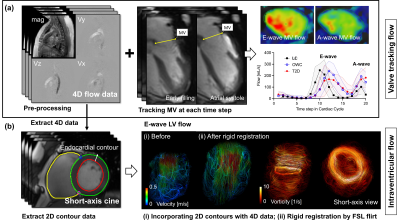 |
Computer Number: 17
3041. Subclinical
dysfunction for overweight people with and without type 2
diabetes using cardiovascular magnetic resonance (CMR) and 4D
flow CMR
S. Park, E. Englund, T. Fujiwara, D. Enge, M. Schäfer, B.
Fonseca, K. Hunter, J. Regensteiner, J. Reusch, A. Barker
Children's Hospital Colorado, University of Colorado Anschutz Medical Campus, Aurora, United States
Impact: This study demonstrates the feasibility of 4D
flow CMR to detect early diastolic dysfunction in overweight
individuals with and without type 2 diabetes, providing
insights for identifying at-risk individuals to improve
cardiac outcomes.
|
|
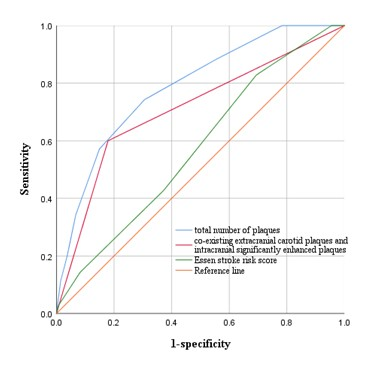 |
Computer Number: 18
3042. Correlation
of Intracranial and Extracranial Carotid Atherosclerotic Plaque
Characteristics with Ischemic Stroke Recurrence
S. Shao, L. Zhu, T. Wang, J. Zhang
Nantong First People’s Hospital, Nantong, China
Impact: Combined HR-VWI imaging of head and neck
arteries can improve stroke recurrence risk assessment,
aiding clinicians in identifying high-risk patients and
guiding targeted treatments.
|
|
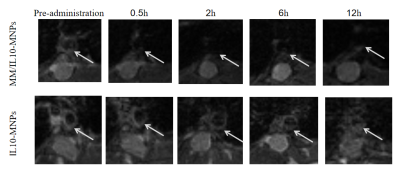 |
Computer Number: 19
3043. Macrophage
membrane spontaneously encapsulated IL10 biomimetic magnetic
nanoparticles for diagnosis and treatment of atherosclerosis
M. Cui, Y. Peng, Q. Yu, R. Li, C. Jiang, Y. Liang, X. Wang,
H. Jia, Y. Meng
Department of Radiology, Taiyuan Central Hospital of Shanxi Medical University, Taiyuan, China
Impact: In the animal results, MM/IL10-MNPs were able to
enhance the active target delivery to atherosclerotic
lesions, increase drug concentration in the pathological
local and inhibit atherosclerotic development.
|
|
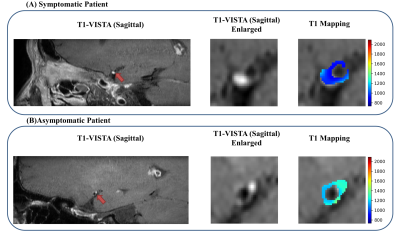 |
Computer Number: 20
3044. In-vivo
contrast enhanced T1 mapping for quantitative evaluation of
intracranial atherosclerotic plaques
X. Lin, X. Liu, H. Sun, J. Dou, Z. Xu, S. Yu, H. Chen
Tsinghua University, Beijing, China
Impact: The proposed approach shows promise in advancing
our comprehension of intracranial atherosclerosis and its
clinical implications, more patients are being recruited for
further validation.
|
|
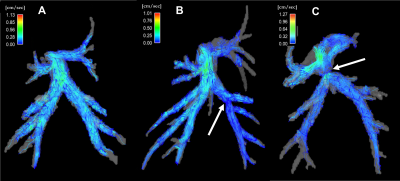 |
Computer Number: 21
3045. Cardiac
Function and 4D Flow in a Swine Model of Isolated Post-Capillary
Pulmonary Hypertension
T. Houston, D. Seiter, T. Hacker, B. Allen, E. Schmuck, T.
Oecthering, A. Wentland, D. Martinez, N. Chesler, O. Wieben
University of Wisconsin-Madison, Madison, United States
Impact: This swine model of isolated post-capillary PH
demonstrates altered pulmonary venous return with elevated
pulmonary vascular resistance and mean pulmonary artery
pressure while preserving left ventricular ejection
fraction, providing a potential means for evaluating
progression to combined pre/post-capillary PH.
|
|
 |
Computer Number: 22
3046. Automatic
background offset correction of cardiovascular 4D flow MRI data
using Deep Learning
F. Viola, C. Trenti, M. Ekstedt, F. Vanky, C-J Carlhäll, P.
Dyverfeldt, T. Ebbers
Linköping University, Linköping, Sweden
Impact: The proposed fully automated CNN-based
background offset correction method outperformed the
conventional background offset correction methods that use a
polynomial fit to static tissue. This method has potential
for significantly improving the data quality of
cardiovascular 4D flow MRI.
|
|
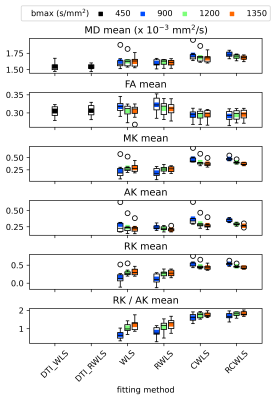 |
Computer Number: 23
3047. Robust
estimation with convexity constraints for improved diffusion
kurtosis imaging of the human heart in vivo
S. Coveney, M. Afzali, L. Mueller, T. Haije, I. Teh, F.
Szczepankiewicz, D. Jones, J. Schneider
University of Leeds, Leeds, United Kingdom
Impact: Robust estimation has now been combined with
fitting constraints, allowing for reliable estimation of
kurtosis measures from in vivo multi-shell cardiac diffusion
MRI data. This approach will improve fidelity of kurtosis
quantification in the human heart in vivo.
|
|
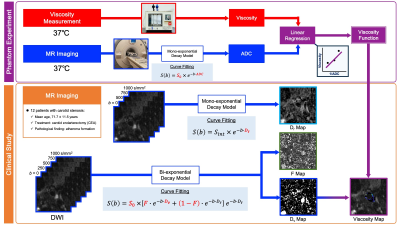 |
Computer Number: 24
3048. Determination
of Viscosity and Formations of Atherosclerotic Plaque Using
Diffusion MRI Analysis
M. Seguchi, Y. Kanazawa, T. Miyati, M. Harada, M. Miyoshi,
T. Wakayama, H. Hayashi, A. Haga
Tokushima University, Tokushima, Japan
Impact: Non-invasively obtaining detailed information on
the viscosity and formations of atherosclerotic plaque.
|
|
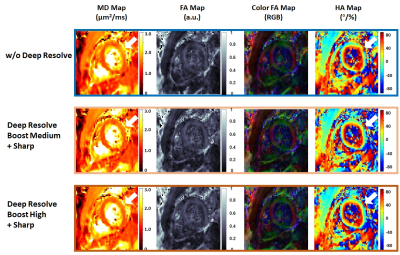 |
Computer Number: 25
3049. Initial
Evaluation of Deep Resolve Boost and Sharp for Cardiac Diffusion
Tensor Imaging in Volunteers and Patients
Y. Liu, D. Kara, D. Mai, T. R. S. Moura, M. Schmidt, D.
Kwon, X. Bi, C. Nguyen
Siemens Medical Solutions USA, Inc., Cleveland, United States
Impact: Preliminary results in 11 volunteers and 3
patients show that Deep Resolve Boost and Sharp achieved SNR
enhancement and improved image sharpness for cardiac DTI.
The fact that it can be deployed on scanners prospectively
also enhances its clinical utility.
|
|
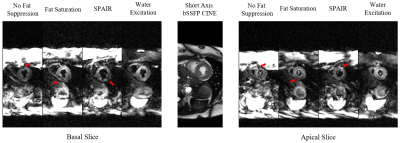 |
Computer Number: 26
3050. Optimised
Reduced Field of View and Fat Suppression Techniques in
Interleaved Multi-slice Diffusion Tensor Cardiovascular Magnetic
Resonance
Y. Luo, P. Ferreira, D. Pennell, G. Yang, S.
Nielles-Vallespin, A. Scott
Imperial College London, London, United Kingdom
Impact: Robust fat suppression provided by binomial
water selective excitation in combination with reduced phase
FOV DT-CMR compatible with interleaved multi-slice imaging,
will enable efficient spin echo based assessment of the
cardiac microstructure in future clinical studies.
|
|
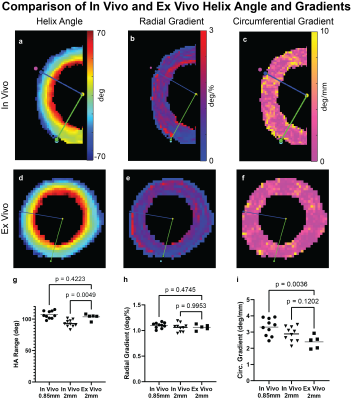 |
Computer Number: 27
3051. DTI
Phenomapping of the Human Heart In Vivo and Ex Vivo
C. Rock, I. Chen, B. Keil, C. Nguyen, D. Sosnovik
Massachusetts General Hospital, Boston, United States
Impact: DTI phenomapping of the human in vivo and ex
vivo yielded near identical results, validating the accuracy
of the technique to characterize myocardial microstructure.
|
|
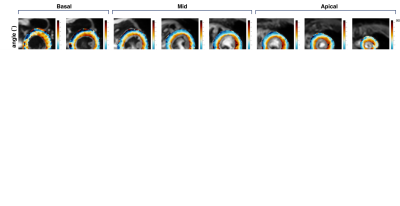 |
Computer Number: 28
3052. Whole
heart diffusion tensor CMR using commercial ultrahigh
performance whole body gradients
A. Scott, P. Ferreira, R. Wage, K. Kunze, D. Pennell, S.
Nielles-Vallespin
Imperial College London, London, United Kingdom
Impact: Ultrahigh strength gradient enabled whole heart
DT-CMR will enable assessment of pathological localised
changes in cardiac microstructure.
|
|
 |
Computer Number: 29
3053. MRI
Characterization of Intrathrombus Transport and Flow During
Vessel Occlusion
C. Kubicki, T. Neuberger, K. Manning
The Pennsylvania State University, University Park, United States
Impact: Understanding intrathrombus transport mechanisms
will provide researchers a better understanding of
thrombolytic therapy failure and success. These data can be
used to explain why certain clots are clinically more
resistant to thrombolytics and to help build better
predictive computational models.
|
|
 |
Computer Number: 30
3054. Non-Invasive
Assessment of Early Myocardial Damage in Type 2 Diabetes
Mellitus by Cardiovascular Magnetic Resonance Diffusion Tensor
Imaging
Q. Zhong, K. Feng, Y. Xin, Y. Wang, C. Zhang, Y. Ma
Department of Radiology, Shengjing Hospital of China Medical University, 110004, Shenyang, China, shenyang, China
Impact: In initial-phase patients with T2DM, CMR-DTI
reveals diffuse changes of varying degrees in the left
ventricle. Diffusion tensor imaging (DTI) can provide high
diagnostic sensitivity for these patients.
|
|
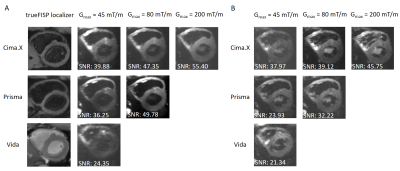 |
Computer Number: 31
3055. An
Open Source Motion-compensated Cardiac Diffusion Sequence
Validated Across Different MRI Systems and Gradient Strengths
E. Arbes, S. Reiss, A. Hannum, J. Fischer, Q. Chen, M. Bock
Dept. of Radiology – Medical Physics, University Medical Center Freiburg, University of Freiburg, Freiburg im Breisgau, Germany
Impact: The sequence allows for consistent and
comparable application of cardiac diffusion MRI at different
MRI systems and field strengths enabling standardized
multi-center studies and cross-vendor cooperation.
|
|
 |
Computer Number: 32
3056. MR
microscopy of cardiac microstructure with diffusion and
structural tensor imaging in high-performance clinical and
pre-clinical MR scanners
C. Munoz, A. Di Biase, K. McCarthy, N. Baxan, K. Kunze, P.
Speier, A. Krug, D. Pennell, A. Scott, P. Ferreira, S.
Nielles-Vallespin
Imperial College London, London, United Kingdom
Impact: High-resolution 3D MR imaging of the heart, with
each voxel containing a few tens of cells, can further our
understanding of cardiac microstructure in health and
disease. These advances pave the way for non-destructive
whole-heart MR microscopy in large samples.
|
The International Society for Magnetic Resonance in Medicine is accredited by the Accreditation Council for Continuing Medical Education to provide continuing medical education for physicians.